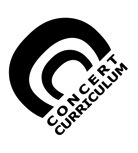History

The Concert Curriculum began as a commission composer Arthur Bloom received from the Albany Symphony Orchestra. He was asked to create a children’s symphony that they could use for unparalleled education and outreach. The result was An Orchestra’s Guide To The Young Person, a year-long curriculum in which a whole grade of middle school students worked with Bloom and their teachers to create and learn material that they ultimately performed on stage with the orchestra.
Scripted to accommodate the students’ work, the culminating concert was a hybrid genre, a musical starring elementary school students that emerged from within the orchestra concert. The plot involved a child on stage who fell asleep. While the “outer concert” featured masterpieces by Mozart and Ravel, once the child’s dreams took over, the “inner concert” featured original music by Bloom, and the material and performances by the students who pursued the year of preparation.
An Orchestra's Guide To The Young Person was replicated in urban, suburban, and rural communities with success. Principal Thomas Rabone of Castleton, NY summed it up as “an extraordinary year that culminated in an event so spectacular, it brought together families, teachers, and students, and rallied the whole community.” In the Columbia University National Arts Journalism Program Journal, Gwendolyn Freed called it “the most exciting thing going on in children’s programming.” Susan Tilley, Regional Arts Administrator for the Kravis Center for the Performing Arts in West Palm Beach, Florida, stated "we have never had concerts that integrate children's and professionals' talents to this degree, or that engage large audiences of young people in quite this fashion. This is outreach at its best!" Phillippe Entremont, conductor of the Israel Chamber Orchestra, concluded that “it was a thoroughly unique and exhilarating experience for the orchestra, for the children, and for me, which made for a fantastic experience for the audience.! We would love to do it again.”
Following its success, Bloom founded Renovation In Music Education (RIME) in order to bring the Concert Curriculum to a wider audience. In 2004, RIME received funding from NASA’s Initiative to Develop Education through Astronomy and Space Science (IDEAS) Grant Program administered by the Space Telescope Science Institute, and the National Endowment for the Arts, in order to add a science component to the Concert Curriculum. The result was the world's second Concert Curriculum, An Orchestra's Guide To The Universe, which premiered on “Maryland Day,” April 29th, 2006, at the Clarice Smith Center for the Performing Arts at the University of Maryland Campus.
By interlinking science and music throughout, each benefited the other. The culminating performance – a multimedia event featuring the students, classical, jazz, rock, and African music punctuated by images from space projected into the hall, and a plot in which a dozing child blasts the concert into the universe – communicated astronomy to the public in a compelling new way. And by virtue of their participation, the students excelled at school. A rigorous, controlled impact evaluation conducted by researchers at New York University and Harvard University confirmed that relative to a matched comparison school, participating students showed greater increases in grades across the year of the intervention, with significant increases reported in science, math, and overall academic competence. Results of their evaluation are available online HERE.
